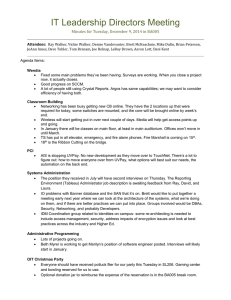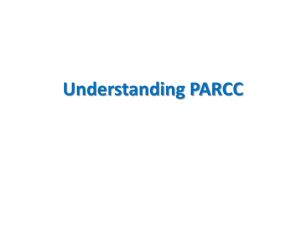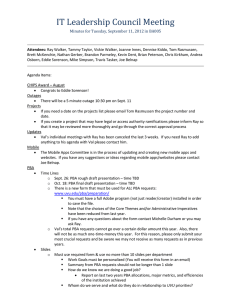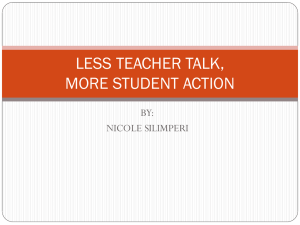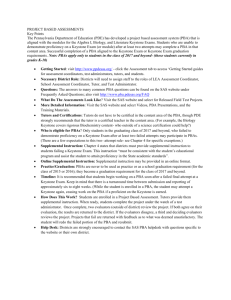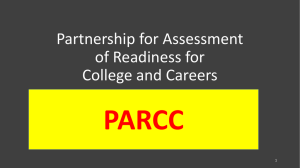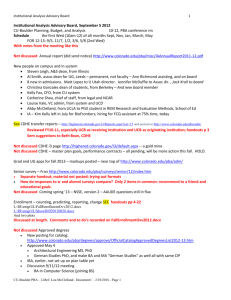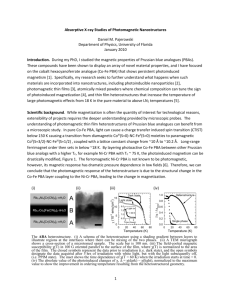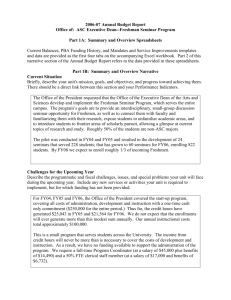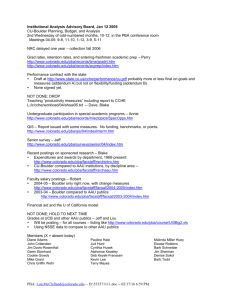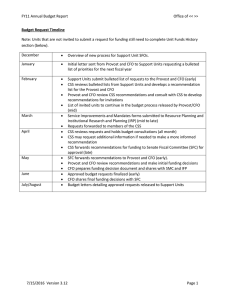Introductory Powerpoint
advertisement
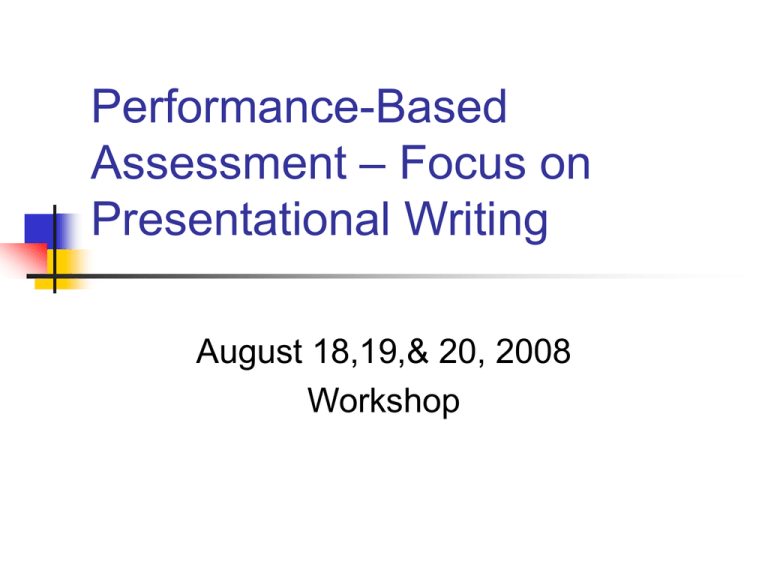
Performance-Based Assessment – Focus on Presentational Writing August 18,19,& 20, 2008 Workshop Goals for the Workshop Gain knowledge and understanding of performance based assessment (PBA) for Presentational Writing & Interpretive Reading Analyze and distinguish effective & ratable PBAs from less effective and unratable PBAs Apply workshop concepts to develop effective performance-based assessment tasks, prompts, and associated scoring rubrics 3 Day Progression… Day 1: Interactive Input Day 2: Guided Practice Day 3: Independent, (but collaborative) Practice Why? “Ultimately, we want students to grow to be independent. For them to do that, they have to have a sense of what the criteria (are) that make them successful. For a long time, the criteria (have) been a mystery to students…” R.J. Tierney, M. Carter, & L. Desai Portfolio Assessment in Reading-Writing Classroom Student assessment should be grounded in the authentic, real-life activities that are carried out in the classroom. Because effective language learning is meaningful, enjoyable, and interactive, assessment should reflect a similar focus… Students engaged in this process become more and more actively involved in their learning. (Armstrong, 1998, p. 233) “Writing well is one of the greatest intellectual challenges; no wonder it is difficult to teach students to write meaningfully, coherently, persuasively in a foreign language.” Marva Barnett, University of Virginia Secondary Goals Value of teaching writing as a process Various ways to develop students’ writing skills (including peer editing) Research connections to ODE graduation standards What is Performance-Based Assessment (PBA)? Monitors students’ progress in relationship to learner outcomes Requires students to create answers or products/presentations/performances demonstrating their knowledge and skills applicable for real-life based purposes Differs widely from traditional testing (single answer or fill in the blank). PBA - Some Key Points It takes time to develop, implement, refine, and get to that “comfort” zone in using PBA BUT THE PAY OFF IS TREMENDOUS! Key Point #1 Instructional design and decisions should start with assessment What do we want students to learn? How will we know when they have learned it? How will I use the results? Key Point #2 Students should know the criteria and what’s expected UP FRONT. Performance-based task(s) Scoring Guides (rubrics) Exemplars of “excellent” work Key Point #3 Practice, practice, practice… improves performance! Research supports the notion that all students (especially low achievers) will improve when given multiple opportunities to practice When students feel “successful & hopeful” their motivation & performance increase Key point #4 - Knowing the targets, feedback, & reflection “…when student are informed about the learning targets from the beginning, engage in self-assessment, keep track of and regularly reflect on their own growth, and play a role in communicating their learning – the achievement gains are profound, especially for low achievers.” Rick Sitggins, ETS Function Frameworks & LinguaFolios Major Key Point #5 Curriculum-embedded performance and “on demand” performance are not equal… Students tend to perform higher in classroom activities, then they do when assessment is “on demand” WYSI (not) WYG Key Point #6 Instruction and assessment should be congruent. Proficiency-oriented instruction should be matched with proficiency-based assessment Key Point #7 Student Involvement: A sound assessment system involves students in self-assessment, recording keeping, and/or communication. Course Goals Essential Learnings State & District Standards National Standards Function Frameworks ODE Essential Skills Requirements for the Graduating Class of 2012 In accordance with OAR 581-22-0615 Assessment of Essential Skills, the graduating class of 2012 will be required to demonstrate proficiency in the following Essential Skills in order to receive a high school diploma: • Read and comprehend a variety of texts • Write clearly and accurately • Speak clearly and coherently • Apply mathematics in a variety of settings Writing Work Samples Expository Persuasive Narrative Definition: b. “Essential Skills” means process skills that cross academic disciplines and are embedded in the content standards. The skills are not content specific and can be applied in a variety of courses, subjects, and settings. Characteristics of Effective PBA Tasks Students are active participants Intended outcomes are clearly identified & guide the design of the performance task Students are expected to demonstrate mastery of those intended outcomes when completing the task Improving Test Scores Becoming a better Reader & Writer in a world language results in improved standardized test scores in English. Research has shown that the skills you develop in the second language are transferred to skills in the first language. Some Issues to Think About Developing a series of PBA writing tasks & prompts (also for speaking) Producing ratable student work samples (on-demand vs. edited) Getting all teachers on the same page Inter-rater reliability in scoring student work samples Writing As A Process Essential Question: Why do we need to teach a Writing Process? How can it help students? Writing as a Process - Article 1)Form into 6 groups of 3 to 4 each 2) Read the Section for your group • Read independently, highlighting key phrases • Conduct a table discussion and come up with at least 3 to 4 key points from your section for sharing • Share out Writing process Invention Collection Organization Drafting Revising Proofreading Invention: coming up with your topic Brainstorming: Getting your ideas on paper so you can give yourself the widest range of topics possible Brainstorming: coming up with ideas that interest you Listing: Brainstorming Paper Topics Political apathy Animal abuse NFL instant replay Air pollution Telemarketing scams Internet censorship NBA salary caps Clustering: mapping out ideas sportsmanship NBA salary caps ME animal abuse three-party system Flag Burning Amendment political apathy First Amendment Internet censorship NFL instant replay telemarketing scams Collection Gathering ideas Locating and evaluating research Conducting interviews Organizing: putting information in an outline OUTLINE I. Introduction A. Grab attention B. State thesis II. Body A. Build points B. Develop ideas C. Support main claim III. Conclusion A. Reemphasize main idea Drafting Give yourself ample time to work on your project. Find a comfortable place to do your writing. Avoid distractions. Take breaks. Revising: reviewing ideas Review higher-order concerns: Clear communication of ideas Organization of paper Paragraph structure Strong introduction and conclusion Proofreading Review laterorder concerns: Spelling Punctuation Sentence structure Documentation style Proofreading tips Slowly read your paper aloud. Read your paper backwards. Exchange papers with a friend. NOTE: Spell check will not catch everything, and grammar checks are often wrong!
